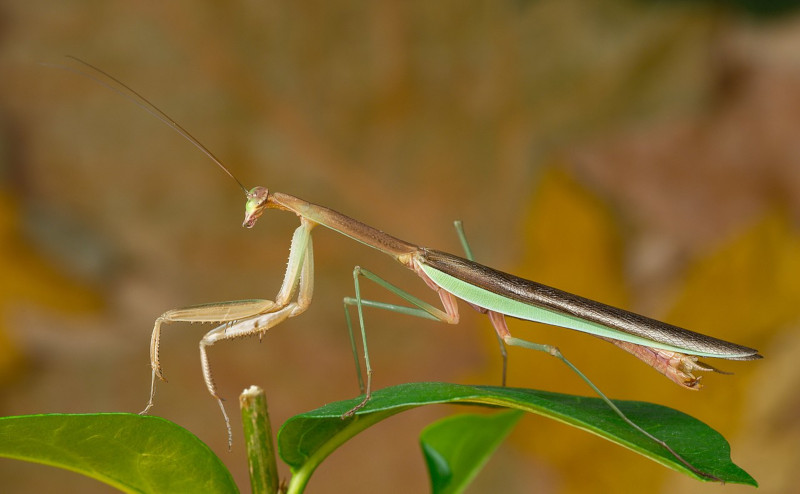
Chinese Mantis Facts
- This specific variety of mantis goes by the simple common name of the Chinese Mantis. For the moment, the creature has no other accepted general names, unlike many of its kindred. The particular term, however, remains somewhat deceptive in nature.
- The official scientific name for the arthropod, though, is somewhat hard to pronounce. That’s because it goes by the technical term of Tenodera sinensis. Regardless of the term one chooses to use, it represents yet another magnificent form of mantid.
- The first known formal recognition of this marvelous invertebrate as a separate and distinct species occurred in 1871. This further took place as a direct result of the body of work of the esteemed French entomologist, Henri Louis Frédéric de Saussure.
- Fortunately, the Chinese Mantis appears to be maintaining a population base that’s both stable and sufficient. This trend also seems to hold true throughout the entirety of its natural range. The IUCN, therefore, presently has no listing for it on its Red List.
- The fabulous insect nevertheless must be facing at least some dangers. Habitat loss, for one, remains at threat to its wild population, though it’s also sold in the pet trade. The danger of climate change, however, likely poses the greatest threat to its existence.
Related Articles
Ghost Mantis
Chinese Mantis Physical Description
The fantastic Chinese Mantis, like its many kin, is an intriguing and impressive creation of evolution. Unlike many other insects, though, this species does not display any noticeable degree of the physiological characteristic on sexual dimorphism.
The genders, therefore, can be quite difficult for the untrained eye to tell apart. That’s true both in terms of appearance and size. In its particular case, it’s especially captivating for its sheer size, however. That’s because it ranks as one the largest known mantids.
Mature adults, more specifically, sometimes reach lengths of as much as 5 in (12.7 cm). The overall body shape, though, remains quite slender, like others of its kind. Its head further displays the triangular shape and over-large eyes so common to mantises.
The general color pattern of the Chinese Mantis also varies significantly between individuals. This usually consists of various shades of light green and tan, however. Many further display a darker green stripe, that extends across most of the sides of the arthropod.
- Kingdom: Animalia
- Phylum: Arthropoda
- Class: Insecta
- Order: Mantodea
- Family: Mantidae
- Genus: Tenodera
- Species: T. sinensis
Chinese Mantis Distribution, Habitat, and Ecology
The stunning Chinese Mantis, fortunately, occupies a moderately large portion of the globe. More precisely, the invertebrate evolved as native to a specific portion of Asia. The marvel of Nature also appears in small populations on nearby islands, as well.
The range it naturally occupies mainly includes the regions of China, Japan, Thailand, Micronesia, and the Korean Peninsula. In 1896, however, a worker in a nursery accidentally introduced this invertebrate into the United States, in North America.
Wherever the insect appears, though, it displays specific preferences in the basic nature of its choice of habitat. That’s due to the fact that it appears almost solely in temperate regions. This mainly includes forest, but sometimes includes parks and even yards.
Like other mantids, the captivating Chinese Mantis evolved as carnivorous in nature. It generally feeds opportunistically, and as an ambush predator, like its kindred. Its prey mainly includes small insects such as spiders, grasshoppers, bees, and katydids.
Its relatively great size, however sets it apart from others in yet another manner. Due to this advantage, it sometimes captures and consumes larger prey. Adult females, in fact, sometimes catch prey such as small amphibians, reptiles, and even hummingbirds.
In the wild, sexual cannibalism seems to be especially prevalent in this species. In fact, nearly 50% of all matings end in this. Its own natural predators, meanwhile, consist of such species as numerous birds, other mantises, and the Asian Giant Hornet.
Species Sharing Its Range
Check out our other articles on Earth’s Many Magical Moths, Tree Kangaroo, Bungle Bungles, Guinan cock-of-the-rock, Epaulette Shark, Maned Wolf, Holy Ghost Orchid, Jackson’s Chameleon
